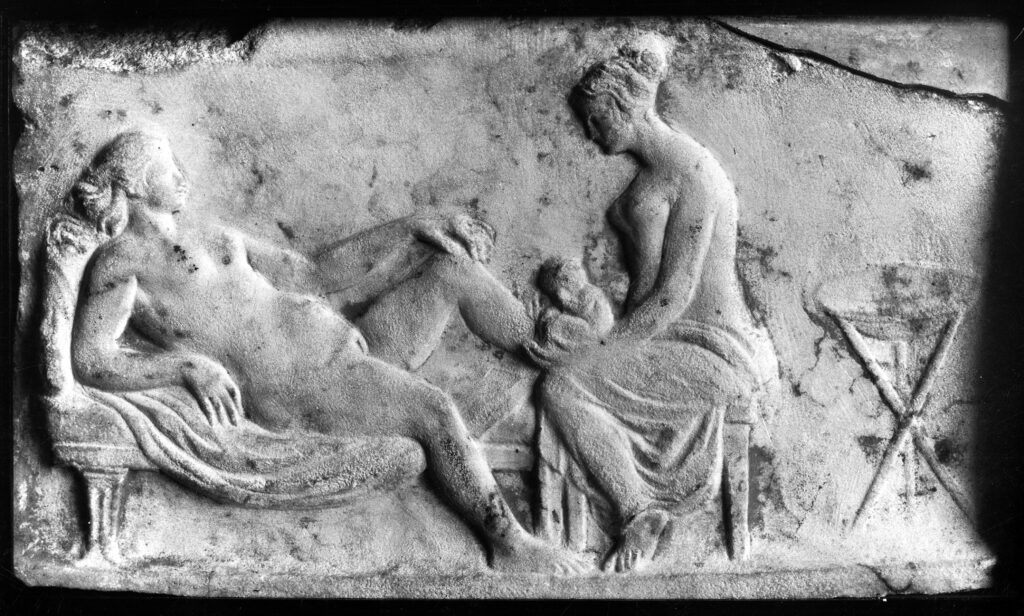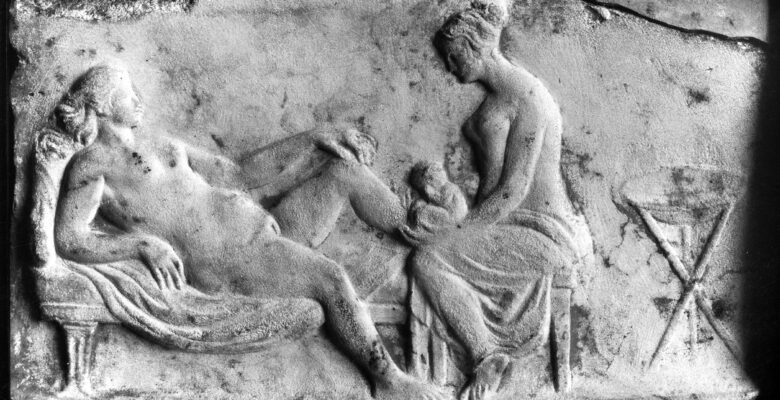Epigram of the month: Call the ancient midwife!
Tomorrow, May 12th, 2021, marks both the endpoint, and the highlight, of a very imporant week. May 6th – 12th is Nurse’s Week, and its last day simultaneously is International Nurses Day.
I would clap, with profound sincerity and gratitude, if this were not to be perceived as deeply cynical at this point.
Those among us who prefer solutions over tokenism and well-meaning, but ultimately inconsequential symbolism have remarked already last year, in March, that staying at home as support is good, additional clapping as a tribute is better, but, ultimately, an actually meaningful appreciation through a reduction of working hours, and / or a higher salary, would be best.
In Austria, some health workers did get a bonus, or were at least promised one (whether this was just a drop in the bucket not changing the overall situation is another matter), but otherwise we – everyone else but the healthcare staff – somehow went back to business as usual.
The item that I chose for this Epigram of the Month, ahead of International Nurses Day, is meant as a little tribute to those members and unsung heroines and heroes of the healthcare profession. To give a name, a voice, a human face, a life, and a story to at least one of those in our society whom we typically just see through their professional roles.
In the present case, that of one Iulia Primigeneia, this is not the story of a nurse as a provider of patient care at large, but more specifically the case of a Roman-era midwife.
The profession of midwifery may be more present in pop culture now than it was a decade ago, largely because of the adaptation of two books for TV series: one leaping a few decades back to the 50s and 60s and into impoverished East London, the other one jumping far ahead into a dystopian future, sending chills up and down your spine when a few fertile women are being enslaved, dehumanised and abused as reproduction machines.
Midwifery in antiquity is arguably one of those areas that, despite significant research into this topic in some quarters of our profession, still does not get the general and widespread attention it deserves.
Although midwives were part of the daily life of many women and families in ancient times, they do not commonly feature prominently in our mental image of the Roman world.
Or have you ever considered that a midwife may have been present when the great Augustus – or any other ancient figure, really – came into this world? This midwife would have been one of the first persons to touch (and clean) the future emperor.
Literary sources such as the treatise Gynaecology of Soranus of Ephesos (a Greek physician of the first and second century CE) aside, there are several ancient inscriptions that mention midwives (for those among you who have an interest in the topic with a focus on the Greek world, check out Jennifer C. Irving’s thesis, pp. 58–75: PDF available for download here).
Among these texts, there is a Greek verse inscription from Rome.
Yes, there are Greek verse inscriptions in Rome.
In fact, there are very many of them.
If you do not believe me, give me two more years and you can read about this fascinating material in my thesis.
At any rate, the piece in question originated from the via Portuense, in the area of Fornetto. It was found around the year 1908, and it is now preserved in the National Museum of Rome, in the Terme di Diocleziano.
The inscribed marble stela (50 x 30 cm) can be dated to the early Imperial period, most likely, and its text reads and translates as follows (IGUR III 1240 (with an image) = GVI 1940 = IGCVO 824 = EDR122788):
Θ(εοῖς) Δ(αίμοσι).
Ἰουλία Πρειμιγένει=
α μαῖα πολλὰς σώ=
σασα γυναῖκας | οὐκ ἔ=
φυγον Μοίρας· ζήσα=
σα καλῶς ἀνέλυ=
σα | εἰς οἶκον, ὅπου
μοι τόπος εὐσεβί=
ης ἀπέκειτο. |
Τι(βέριος) Ἰούλις Ἱέραξ ἀν=
νὴρ τῇ γαμετῇ |
μνημοσύνης
ἀγαθῆς ταῦτ’ ἐ=
πέγραψε φιλῶν. |
To the Spirits of the Departed.
I, Iulia Primigeneia, having saved many women as a midwife,
did not escape the Fates. Having lived well, I departed home,
where a place of piety has been preserved for me.
Tiberius Iuli(u)s Hierax, her husband, had this inscribed
(onto the monument) for his wife,
in good memory, loving her.
Unfortunately, I cannot reproduce an image of the piece here – maybe you have a chance to consult it in IGUR. If this is inaccessible to you, let me run you through some details of the monument.
Think of a stela, with a double frame, the quarter below being left blank.
The text layout is clearly planned: the dedication to the spirits (line 1) is centered, the two letters divided by a word-dividing marker in the shape of a leaf. The part about Primigeneia (lines 2–9) is indented after the bigger letter I, and there is a sign in the shape of a dash that marks the change in speaker (and person). In the part about Hierax (lines 10–14), the letter T is also slighty bigger and the following lines, again, are indented. Guiding lines used by the stonecutter in the process of designing and writing the inscription are visible throughout.
But let us return to the text.
The inscription begins with a dedication to otherworldly spirits (line 1), Rome’s Di Manes, as they are called in Latin.
After that, there is a poem of five metrical lines (spread out over lines 2–14 of the inscription), constisting of three hexameters and two pentameters – or two hexameters, one distich and one pentameter, if you will. Verse breaks and line ends do not commonly coincide.
(For those among you who are into metrical details: Interestingly, you have to know, or get it by trying at least, to omit Ἰουλία (line 2) and Ἰούλις (line 10) from the hexameter and the pentameter, respectively, for those lines to scan. Furthermore, the ο in πολλὰς (line 3) as well as the ου in ὅπου (line 7) are treated as short syllables, against what prosody would suggest.)
Iulia Primigeneia tells us, from her point of view, that she had been a midwife, and that she in this capacity had saved the lives of many women. Yet she did not escape the Fates herself. Unfortunately, she does not say more about her profession than that (but for further information on midwifery in antiquity consider for example this or this article as well as Helen King’s book Midwifery, Obstetrics and the Rise of Gynaecology on its afterlife in the modern era).

As simple and humble as Iulia Primigeneia’s image may have been created here, it is one of the very important items at our disposal to address what I lamented earlier on.
It is exactly through inscriptions like this present one that ancient midwifery suddenly begins to become visible, tangible, audible. Our mental images become clearer, moving from a barely visible, only partly drawn sketch to a more complex, multifaceted image, in some areas even filled with some colour.
Primigeneia worked as a midwife.
She saved women.
She spoke Greek.
In Rome.
She lived well.
Women in Rome gave birth to children, and they were not left alone in that, on their own devices, unassisted. They could rely on the skillful work of midwives, building on their knowledge and experience in case of emergency.
The family names of Primigeneia and her husband Hierax suggest that they both, previously enslaved, were freed under one of the Julian emperors, possibly Tiberius, if Hierax’s praenomen is anything to go by. (There is a slight possibility that they were ‘just’ descendants of freed(wo)men of the Julian emperors, but the likelihood of that low because they both share the same name.)
It is entirely possible that Primigeneia supported the women of the Imperial family in childbirth.
It is unlikely that Iulia Primigeneia helped to deliver Augustus himself, as imagined above, or that she assisted during the birth of Tiberius.
But she may well have supported Agrippina the Elder in bringing Caligula to this world.
This must remain speculation, of course.
Many aspects and details of the lives of Iulia Primigeneia and her husband sadly remain unanswered. At what age were they manumitted? Did Primigeneia indeed serve as a midwife in the Imperial household? And what did Hierax do for a living?
There are many other aspects of the poem that deserve attention as well, such as the allusion to the motif of the saviour who cannot save herself from the inevitable Fates, or the notion of leaving home and retreating to a place of piety (which led some to think that the inscription may be Jewish, whereas others thought that it might be an early Christian piece).
But I leave that for another time.
Today, let us give attention to those on whose attention we rely. Let us respect International Nurses Day, and let us show our appreciation, our meaningful attention, for those who dedicate their lives to saving ours, every day, but do not receive the honour and visibility they deserve.

